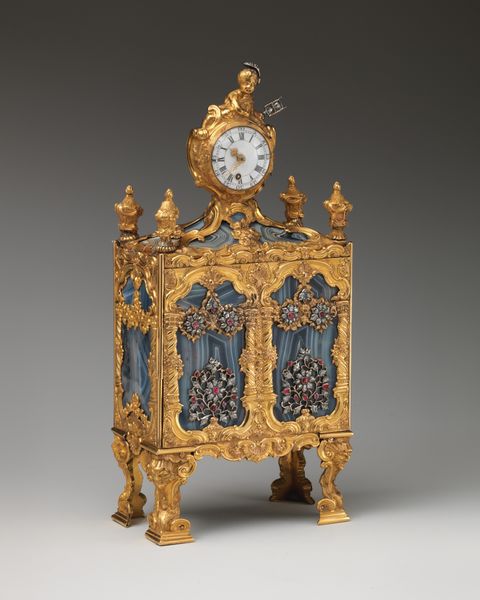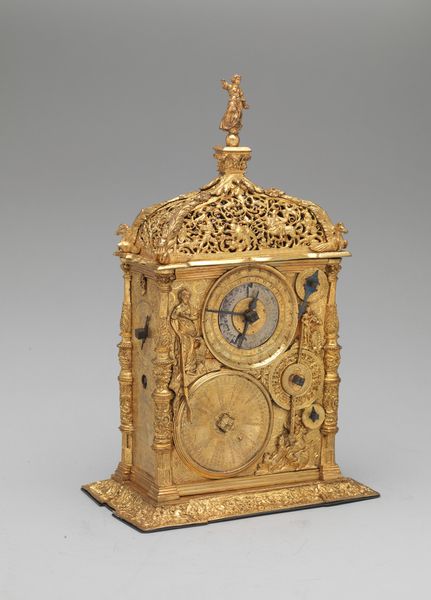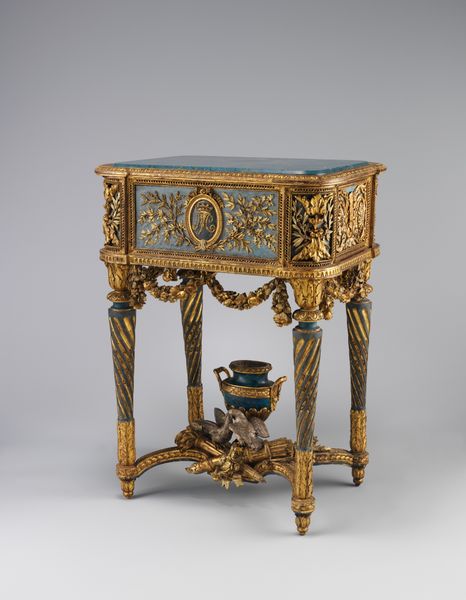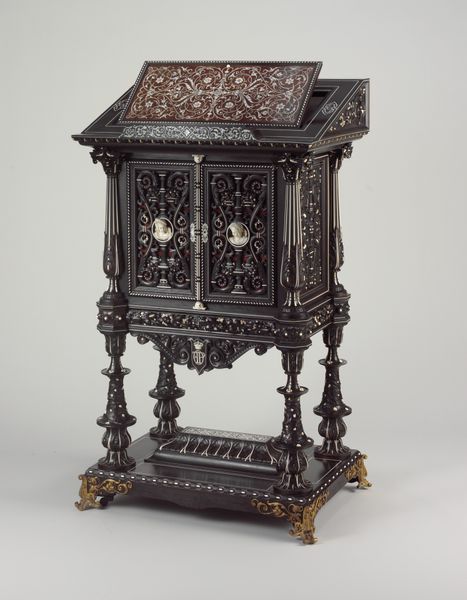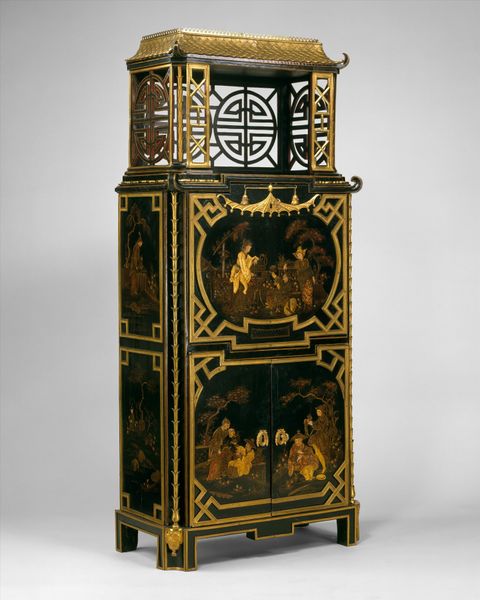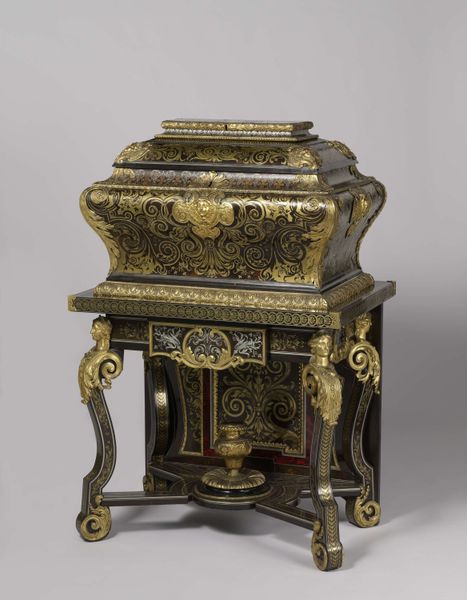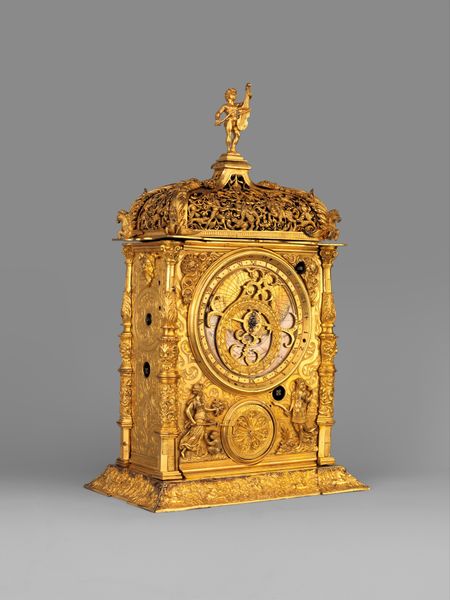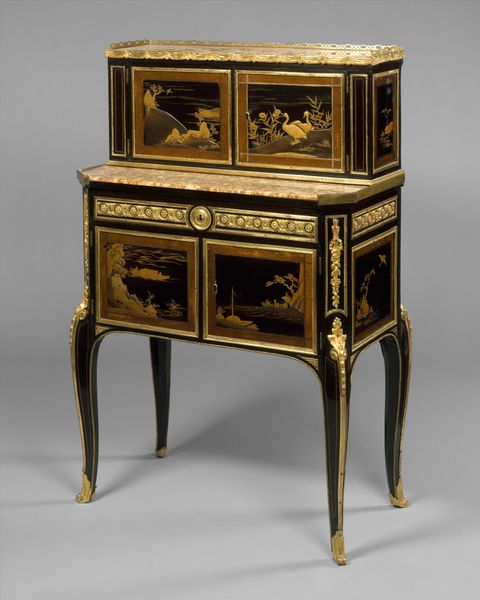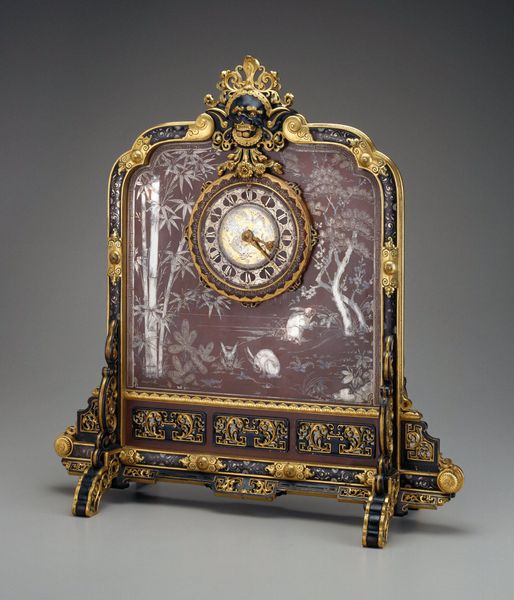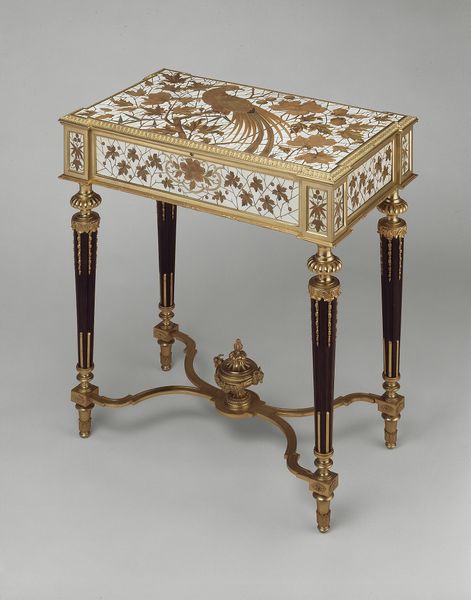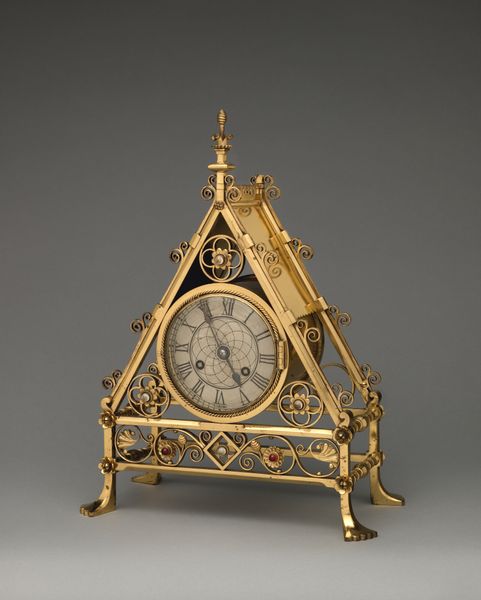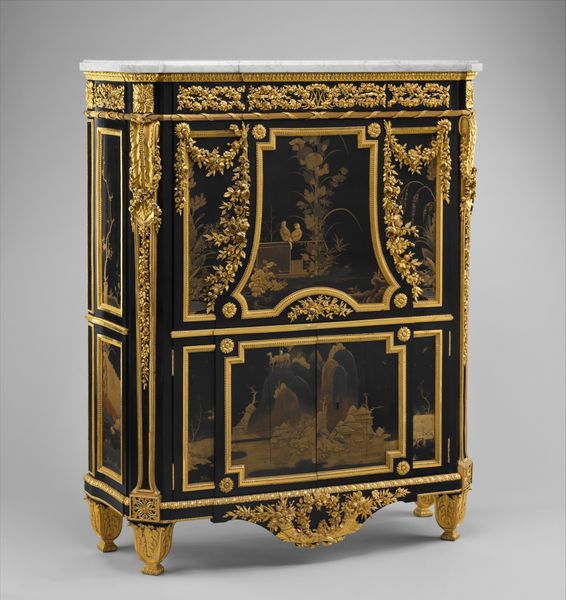
sculpture
#
ornate
#
natural stone pattern
#
3d sculpting
#
3d model
#
3d printed part
#
virtual 3d design
#
3d shape
#
stoneware
#
sculpture
#
metallic object render
#
3d modeling
#
decorative-art
Dimensions: a) H. 8-1/2 in. (21.6 cm) b) L. 2-1/8 x 1-1/8 in. (5.4 x 2.9 cm) c) L. 2-7/16 in. (6.2 cm) d) H. 7/8 in. (2.2 cm) e,f) H. 2-5/8 in. (6.7 cm) g,h) H. 2-11/16 in. (6.8 cm) i,j) H. 2-11/16 in. (6.8 cm) k,l) H. 2-1/16 in. (5.2 cm) m,n) H. 2 in. (5.1 cm) o) L. 1-5/8 in. (4.1 cm) p) L. 1-7/16 in. (3.7 cm) q) L. 1-1/2 in. (3.8 cm) r) L. 2-1/8 in. (5.4 cm) s) L. 1-5/16 in. (3.3 cm) t) Gr. L. 3-1/4 in. (8.3 cm) u) L. 1-9/16 in. (4 cm) v) L. 1-5/16 in. (3.3 cm) w) L. 1-11/16 in. (4.3 cm) x) L. 1-5/16 in. (3.3) y) H. 11/16 in. (1.7 cm) z) L. 1-7/16 in. (3.7 cm) aa) L. 1-1/4 in. (3.2 cm)
Copyright: Public Domain
This gold nécessaire was created around 1720 by John Best. Notice how the ornate filigree work gives a sense of depth and complexity to the structure. The gold is configured in a hexagonal shape, offering a visually interesting object that toys with light and shadow. The piece invites a dialogue between form and function. It serves not merely as a container, but as a statement about the era's approach to craftsmanship, class, and luxury. The intricate latticework, juxtaposed against the dark interior, creates a play of positive and negative space, challenging our perception of what constitutes solidity and void. Consider how the addition of the clock transforms the object into a symbolic marker of time. It reminds us of the value placed on temporal awareness in the aristocratic lifestyle. The craftsmanship and design encourage us to ponder the broader narratives about artistry and the cultural values embedded within functional objects.
Comments
No comments
Be the first to comment and join the conversation on the ultimate creative platform.
